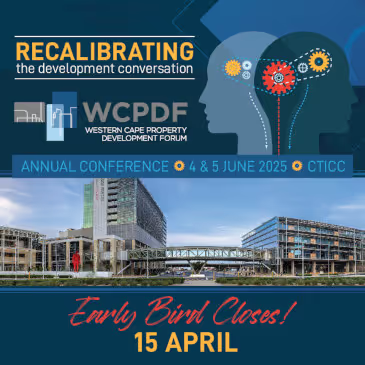Public-Private Partnerships Key in delivery of affordable housing
Demand for affordable housing is high but supply is limited
- 5 811 households earning R3 501 to R22 000 per month bought property through government financial programme for first-time buyers
- The government plans to build 10 800 rental stock and provide 12 000 finance subsidies over the next three years
- Partnerships between the government, local municipalities, property developers, banks and financial institutions are key in meeting affordable housing demand
- Municipalities can use property developments as a source of income if they avail land and incentivise investors through the reduction of rates and taxes-
- Investments into South Africa’s built-to-rent sector remains low compared to developed markets
- The multifamily or built-to-rent sector accounts for 2% of the JSE’s real estate investment trust (Reits) sector
- Lack of data investment and understanding of the sector limits capital flows
With rapid urbanisation in South African cities, demand for affordable housing exceeds available supply – private and public partnerships are key in addressing challenges in the provision of affordable housing.
The Department of Human Settlements describes affordable housing as the provision of rental and social housing programmes to provide housing finance to traditionally unserved segments of the population.
Zodidi Meyiswa, senior advisor for Human Settlements at the South African Local Government Association (SALGA) commented: “It is vital for the private sector and government to work together in addressing challenges in the property development sector to create a functional residential property market.
“A collaborative engagement between the Department of Human Settlements, private property developers, local municipalities, banks and funding institutions need to be prioritised to unlock new economic opportunities while delivering affordable housing to growing masses in cities. Municipalities can use property development and investments as a means of generating income, while the property developers can benefit from financial incentives such a reduced rates and taxes.”
The affordable housing market also known as the Gap Housing Market is defined as those households whose income exceeds maximum limit for a full subsidy house but earn too little to acquire a mortgage loan, typically a household with a monthly income of R3 501 to R22 000.
The Department of Human Settlements aims to increase the supply of rental and social housing stock, and assist low‐income and middle‐income households, and plans to build 10 800 rental housing units and disburse 12 000 finance‐linked individual subsidies over the next three years. The department is also working with the Banking Association of South Africa (BASA) to de-risk potential beneficiaries who find themselves not qualifying for various housing opportunities because of their credit ratings.
According to the 2022/2023 Annual Report, the Department of Human Settlements reported that it implemented the First Home Finance Programme designed for first-time home buyers. About 5 811 households earning between R3 501 to R22 000 per month received financial assistance to buy property.
Speaking ahead of the 2nd Annual Residential Investment & Development Conference taking place between 16-19 July, Meyiswa said the government cannot achieve this on its own, and urged the public and private sector to engage to find beneficial solutions to tackling affordable housing shortages.
“Demand for affordable housing remains high in a supply-constrained market due to availability and high costs of well-located urban land as well as low investments in the sector. Increased collaboration is the answer to unlocking available land, developing affordable stock to meet demand while creating opportunities for stakeholders,” she said.
Despite growing demand for residential property – and especially affordable housing - the multifamily residential asset class accounts for 2% of the JSE’s real estate investment trust (Reits) sector in South Africa.
Multifamily residential properties are housing units built-to-rent (BTR), not for sale. These commonly include apartment buildings and multiple housing units within a single complex or estate. Often, institutional investors own these large-scale rental properties and have them managed by professional and specialist residential property operators.
Lack of investment data and understanding of the residential [rental] property sector has resulted in limited capital flows into the sector. However, this is changing thanks to the newly formed South African Multifamily Residential Rental Association (SAMRRA) – an industry body including institutional landlords who own and manage large-scale assets, as well as other entities with interest in the sector.
“There is growing recognition in the South African residential sector of the importance of developing affordable housing close to amenities and places of work. Doing so is more economically productive, environmentally sustainable, and socially just,” said Carel Kleynhans, CEO, Divercity Property Group and SAMRRA Executive Member.
Reside Chair Debbie Tagg said the annual Reside Summit - now in its second year - is supported by 30 industry bodies including the National Home Builders Registration Council (NHBRC), Social Housing Regulatory Authority (SHRA), Property Sector Charter Council, Property Practitioners Regulatory Authority (PPRA), South African Institute of Architects, SA Reit Association, and the Banking Association of South Africa among others.
“Themed ‘Transforming Spaces, Enriching Lives’, the Reside Summit is a platform for dialogue between the government and the private sector in unlocking opportunities in the property development and investment sector in South Africa.”
.avif)




.avif)




.svg)



.avif)









.avif)

.avif)

.avif)
